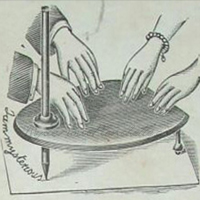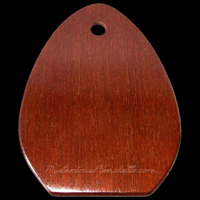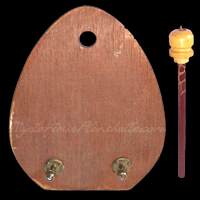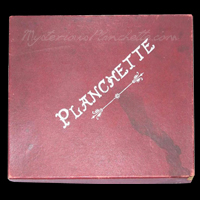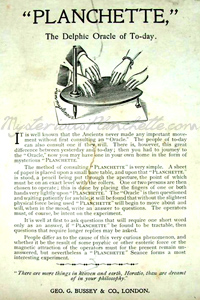The spirit of invention never fails to amaze, particularly in the pre-digital Victorian Age where wood, metal, and bone took on ingenious new forms in the hands of master craftsmen. Few Victorian entrepreneurs can match the vibrant and varied life of George Gibson Bussey (1829-89), whose sporting goods company manufactured the beautiful "Delphic Oracle" planchette in Great Britain. George Bussey was a saddler and gunsmith by trade who moved to London in 1851, where he became fascinated with the goods in shop windows, studying them carefully to see what goods were in demand. Within 5 years he was applying for his own patents, and throughout the 1860s, his life is a vivid reflection of hard work, endurance, and upward mobility as an industrialist, opening newer and better factories and manufacturing a wider array of sporting goods.
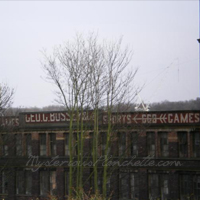
The old Bussey factory where its planchettes were likely manufactured still stands, now redeveloped into stylish apartments, coffee shops, and art galleries for Peckham's hipster set.
By 1870, his new factory outside of London was well established, which also housed a museum of firearms, a 150-yard indoor rifle range, and a skating rink! More patents followed?the first British patent for air pistols, fencing helmets, and two patents for roller skates. Among the most ingenuous is a spring-loaded, pull-string device that launched thin, steel propellers in an early version of clay pigeons for shooting enthusiasts, and its invention put a stop to live birds being shot as target practice in England! Another device was known as a "Captive Golf Ball" that allowed full-swing practice without the pesky annoyance of ball retrieval, and his firm also produced a dining room table that converted to a billiards table with the pull of a clever spring-loaded switch.
By this time, Bussey's firm had moved into the manufacture of lawn tennis rackets, footballs, gold clubs, and leather goods. Perhaps his most popular item was known as the "Demon Driver," favored by legendary cricketers of the time. The bats were famously made with willow wood gathered from the grove on Bussey's own estate, Brookfield, formerly the royal summer residence of the Marquis of Exeter! By 1887 George G. Bussey & Co. utterly dominated London's athletic goods market, and the company built a new imposing brick factory that still stands to this day, its massive painted letterhead is a popular local landmark, as it can still be spied by passengers of approaching trains on the nearby railway. While the figurehead of this great industry died in 1889 during a run for the Isle of Wight city council, his company and spirit of enterprise lived on, with evidence suggesting it was still producing products as late as 1947, where it was among the listed exhibitors at the British Industries Fair, still producing sporting goods.
Given the great, varied history of the George G. Bussey company, dating planchettes produced by his firm is difficult. Absent the discovery of any extent advertising or a printed date on a board or box that can direct us to the proper factory of its creation, we're at a loss. Even then, the planchettes were in all likelihood produced in the Peckham factory built in the mid-1860s, which marked the expansion of the company into many new lines of products. But given that the time frame of that factory's continuous production of items covers all of the major surges in popularity of planchettes, including the initial 1868 trend, we hesitate to engage in guesswork.
The planchettes themselves are as meticulously crafted as other products by the Bussey company, and the grain seems to indicate they are likely made of the same willow used in the construction of their famous cricket bats. Like many planchettes and talking boards, the varnish coats only the top of the plank?most likely a cost-and-materials saving measure. The pencil clamp appears to be of turned maple in a blond finish. Unfortunately, the pictures we have gathered show the pencil sleeve detached from the board, though a faint circular mark remains on both the board's upper and undersides, revealing that it may have been a two-piece affair, as the instruction's illustrations clearly show the aperture on the top of the board.
The castors are beautiful, petite ball-bearing type with a distinctive flare from the otherwise slender shaft, held in place to the exterior of the board with no wood penetration with 3 small flathead screws. Like many British planchettes, it lacks the heart shape of its contemporaries, and instead has the more rounded shape with the flat black, with a very similar symmetry to the Jaques & Son?most likely its most immediate and direct competition.







